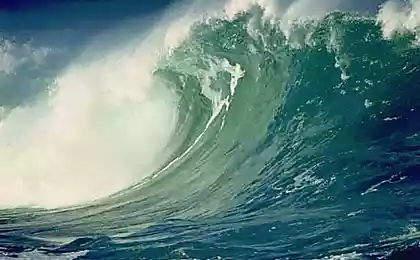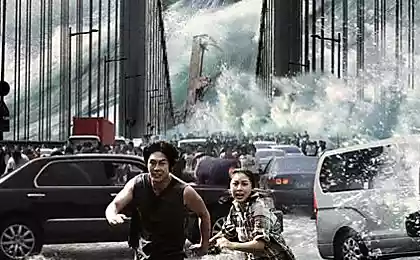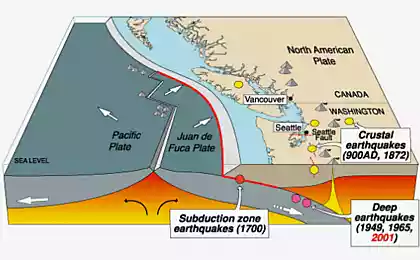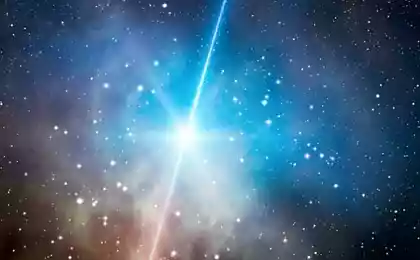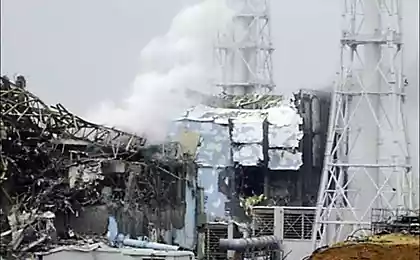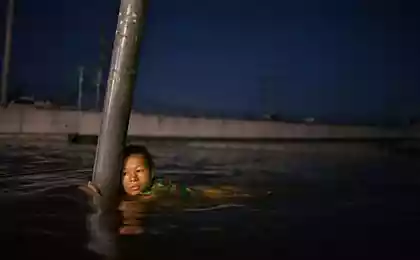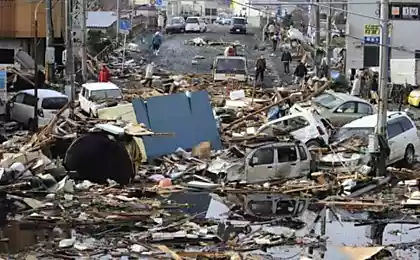2752
Interesting facts about tsunamis
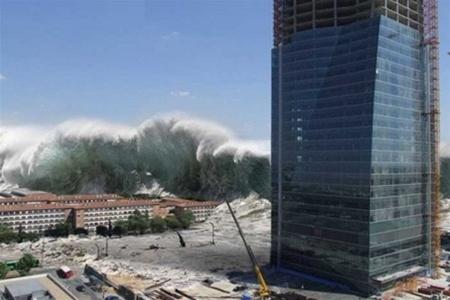
Tsunamis are usually a consequence of the earthquake, but it can also trigger volcanic eruption, landslide, abrupt changes in atmospheric pressure or a meteorite.
Tsunami - is not just one big wave, but a series of waves, called "wave train". The time interval between the waves is called "wave period" and may be delayed by five minutes to two hours. The first wave is usually not the most powerful, and later, for example, fifth or sixth, can be much larger.
The Greek historian Thucydides (460-395 BC) in his "History of the Peloponnesian War" was the first one connected with underground earthquake tsunami.
In the distant parts of the ocean tsunami wave may be only 1-3 feet tall. Mariners may not even realize that they are under a tsunami wave.
Nine-Indonesian earthquake in 2004 freed up more energy than all the earthquakes on the planet over the past 25 years combined. Part of the seafloor the size of California moved up toward the sea more than 30 feet, displacing large volumes of water.
The most dangerous from the point of view of the tsunami are US states of Hawaii, Alaska, Washington, Oregon and California.
Although no one has met with the tsunami generated by a meteorite, many scientists believe that the meteorite could cause a tsunami, which destroyed life on Earth more than 3, 5 billion years ago.
Scientists believe that about 4800 years ago in the Indian Ocean fell asteroid. The tsunami generated by them, according to experts had a height of about 600 feet (180 m).
The 2004 tsunami in the Indian Ocean killed more than 216,000 people, maybe there were not less than 283 000. The victims were not only locals, but also about 9,000 tourists from Australia, Sweden, the UK and the USA, who spent Christmas holidays at beach resorts South-East Asia.
Palm trees with their long bare trunks are well adapted to life on the shore and often resist shock tsunami.
According to the description of events, those who try to escape the tsunami by car, are often caught in traffic jams or collide with other circumstances, so it is likely that their wave will wash away. Statistics show that the best way to escape - as quickly as possible to get yourself a steep hill
Often people are killed already after the first tsunami struck when too early to come back after him at home or go to the beach to help the affected people or animals, where they were overtaken by the next wave.
When injected into the tsunami is best not to attempt to sail alone, and grab the floating object and let the flow carry you.
From half an hour before the tsunami struck the ocean can (but not always) if dry. The retreat of the water is called "departure", it is a "trough" tsunami overtakes Beach.
Tsunami in Japanese means "wave port" (TAS = Port, Gulf + us = wave) that reflects the rich history of the tsunami in Japan.
We only know two major tsunami hitting Europe: one occurred in Crete and the surrounding Mediterranean coast in 1530 BC, and the second hit of Lisbon in Portugal in 1755.
The Indian Ocean tsunami in 2004 opened up the lost city of Mahabalipuram, the capital of a powerful kingdom, which had trade relations with China, Rome, Greece, Egypt, Arabia, and one and a half thousand years ago. It said the capital was "swallowed the sea" at the height of his fame.
Hours before the Indian Ocean tsunami, people noticed that the elephants and flamingos are directed towards the hills. Dogs and animals in zoos refused to leave their shelters. After the tsunami, it was found quite a bit of dead animals.
After the Japanese tsunami in 2011 on the coast of the peninsula in Miyagi Prefecture had been washed a flood of human bodies.
The tsunami of 2011 in Japan was the most expensive disaster in the world in the history of mankind.
The World Bank estimates that to restore areas of Japan affected by the tsunami, would take at least 232 billion dollars and it will take at least five years.
The biggest of Damage tsunami occurred in the western United States and Canada, took place March 28, 1964, when an earthquake of magnitude 8, 4 points hit Alaska. The waves reached a height of 21 feet and killed more than 120 people. Damage was estimated at $ 106 million.
The earthquake that caused the tsunami of 2011 in Japan, was the fifth power of the earthquake in the world since 1900. 1200 years have passed since the quake a magnitude hit the coast of Japan.
Tsunamis can poison fresh water, ground water and soil, leaving behind a huge amount of salt. As a result, thousands of people could die of hunger and disease long after the last tsunami.
Some geologists have suggested that ancient tsunami could serve as a source of legends such as the great biblical flood, parted the Red Sea during the relocation of the ancient Hebrews from Egypt and the destruction of the Minoan civilization on Crete.
While waves generated by wind, are moved at a speed of from 2 to 60 miles (3, 2 - 97 km) per hour, the tsunami waves can move at speeds up to 600 miles (970 kilometers) per hour, which is about equal to the speed jet .
Although tsunamis occur in every ocean in the world, about 80% of all tsunamis occur in the Pacific "Ring of Fire».
Sometimes they called a tsunami tidal waves, but this is misleading, since the Tsunami have nothing to do with the tides.
Over the past 2,000 years in the Pacific, the tsunami killed around 500 000 people. Merely the 2004 tsunami in the Indian Ocean on the current estimates claimed the lives of more than 280 000 people.
